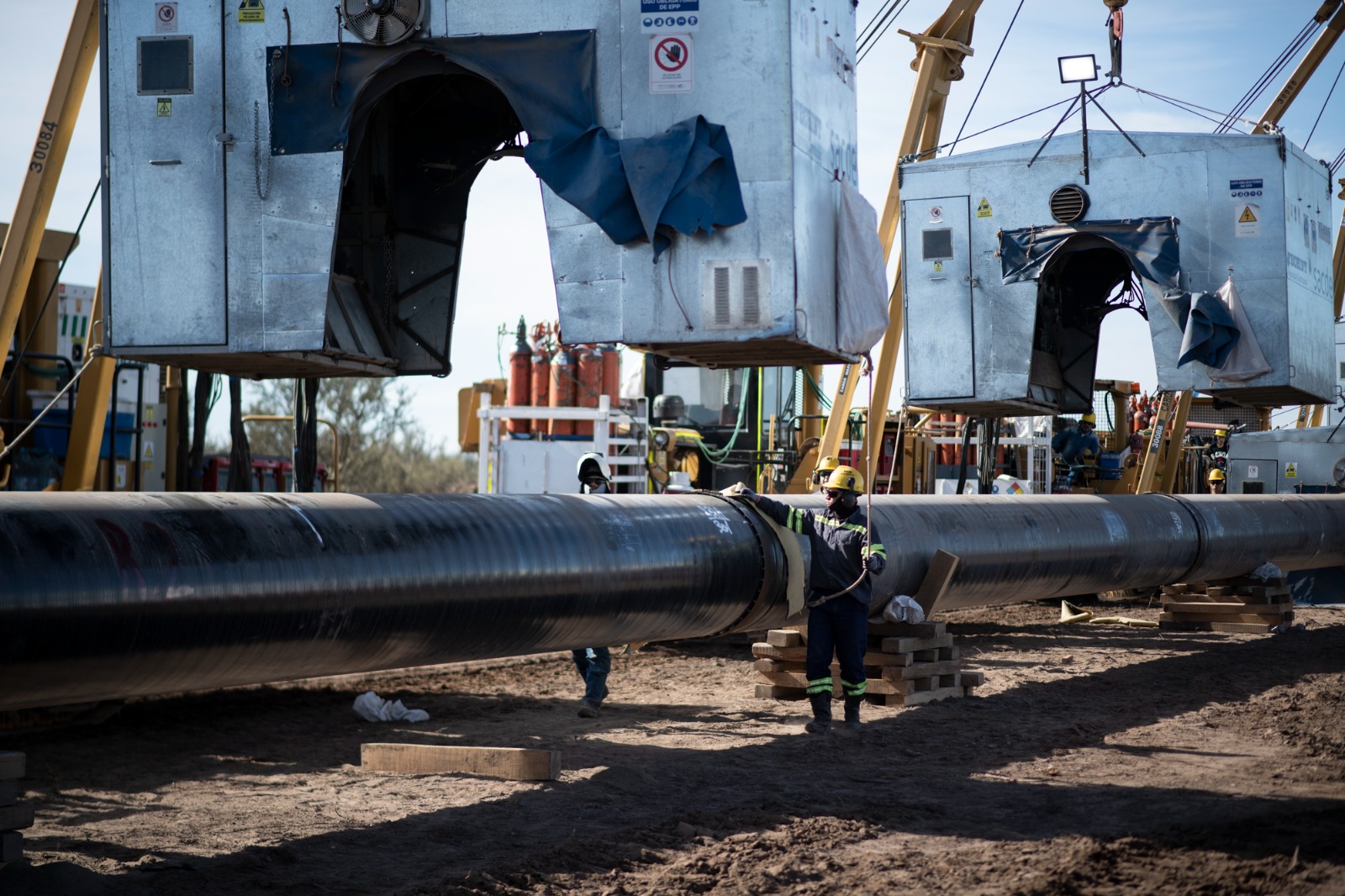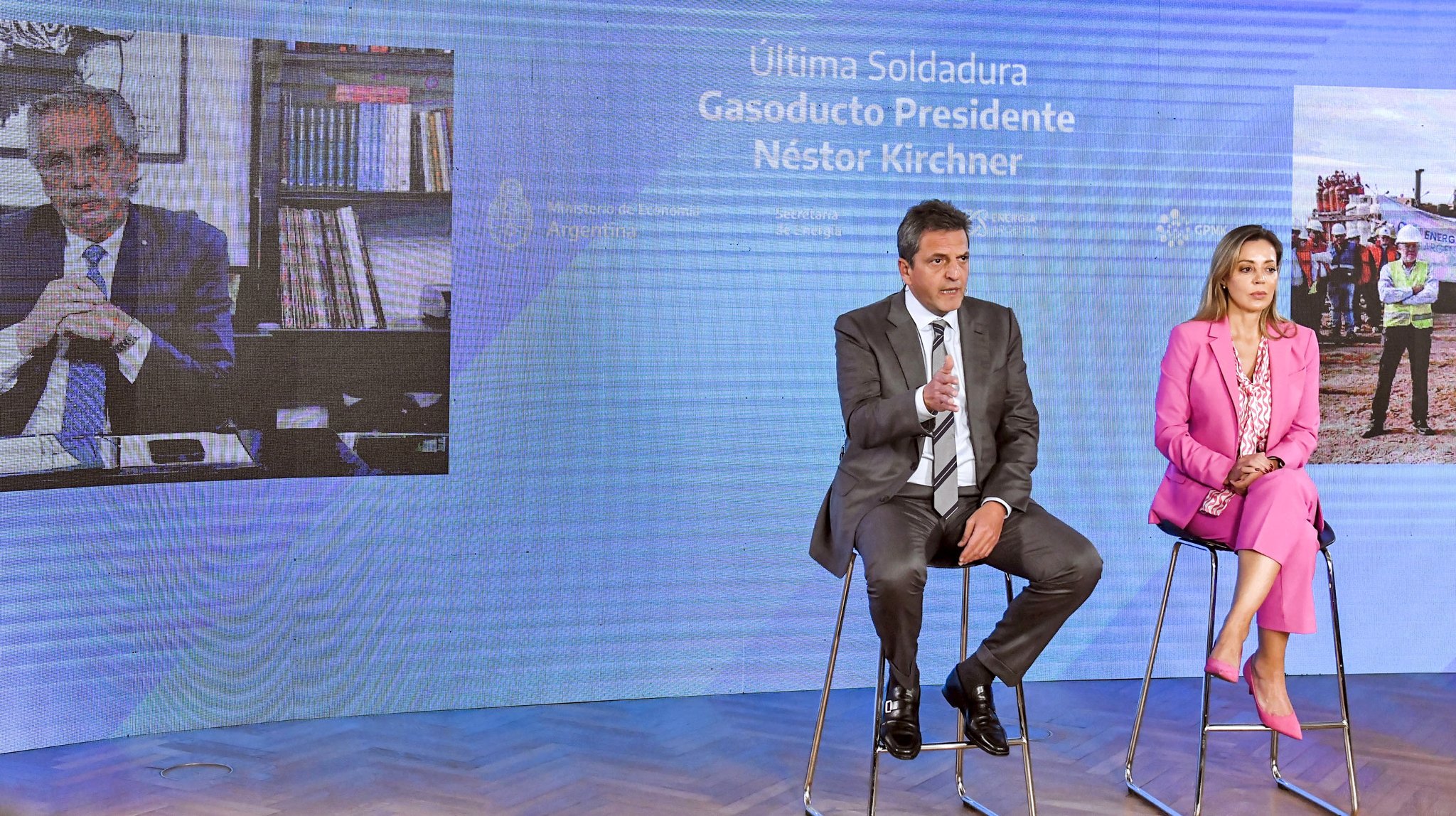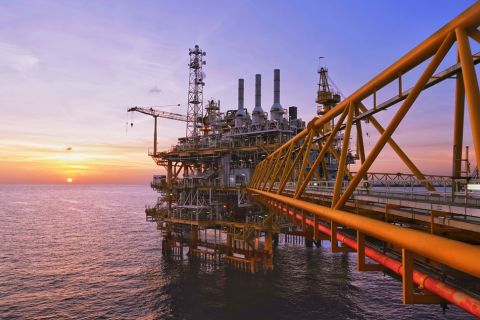NEUQUEN, ARGENTINA—Argentina’s plans for a 25 million tonnes per annum (mtpa) liquefaction facility could convert the country into the second largest LNG exporter in the Latin American and Caribbean region and fourth in the Americas when the U.S. and Canada are included, according to Rystad Energy data compiled by Hart Energy.
The first stage of the facility will have an installed capacity of 5 mtpa, with subsequent stages to add 20 mtpa, according to state-owned YPF SA. But to get there, Argentina first needs to attract capital from wary foreign investors — something the country is trying to rectify through changes to Argentina’s laws.
YPF and partner Petronas, the Malaysian energy giant, look to have the first module installed by 2028, YPF CEO Pablo Iuliano told Hart Energy in May. Iuliano said the estimated cost of the completed facility is between $1,100 to $1,200 per tonne, or between $27.5 billion and $30 billion excluding additional infrastructure investments.
Argentina is home to the largest shale operations outside North America. YPF believes Argentina has sufficient gas resources to become a sizable LNG exporter, and between 2028-2050 looks to maximize monetization of the country’s Vaca Muerta or ‘Dead Cow’ shale gas in the form of LNG.
The Argentine facility will allow the companies to meet global gas demand and replace dirty energy with cleaner sources and reduce CO2 emissions. Importantly, it will allow Argentina to reduce its dependence on costly LNG imports in winter months, boost its energy security and subsequently become a major LNG exporter.
As it stands, the proposed facility would be on par in size and price with the 27.6 mtpa Driftwood LNG LLC facility under construction in Lake Charles, Louisiana. That facility, being developed by Tellurian Inc., carries a price tag of $1,300/tonne, or roughly $36 billion.
But it’s never been easy-peasy for Argentina financially, economically or politically to get anything done in a seemingly straightforward manner. Like its national football team, the country might have to suffer before being able to claim LNG exporting glory.
The future of the project hinges on an LNG bill submitted to Congress guaranteeing investments and legal security, Iuliano said.
“The law is necessary to carry out the project; it’s what generates the conditions for it to be feasible and executable. In the meantime, we’re investing in engineering and initial studies. Once the law is approved, we’ll be ready to make an investment decision, which [we plan to make in] 2024,” Iuliano said.
YPF and Petronas signed a memorandum of understanding (MOU) on Sep. 1, 2022, to start feasibility studies for a liquefaction facility. And approximately 1,500 hectares have been reserved for a port at Bahía Blanca in the Buenos Aires province with access to the Atlantic Ocean, YPF revealed in a corporate presentation on its website.
But YPF confronts headwinds on various fronts. Financially, it has $6 billion in net debt with a busy principal and interest payment schedule over the next five years. As such, the facility is reliant on foreign direct investment — and more of it — in order to move Argentina’s LNG plans forward.
On the macro level, financial analysts expect Argentina to register three-digit inflation this year (it was 8.4% in April). Argentina’s currency remains overvalued and capital controls are constant, limiting foreign companies’ ability to move money out of the country.
Argentine presidential elections are in October. Polls from consultants such as D’Alessio-IROL/Berensztein or Jorge Giaccobe point to a shift in the political landscape from statist policies toward a more pro-market orientation. Despite a potential ideological shift, major course corrections are not expected.
These uncertainties across the board will test Petronas’ nerves and other companies watching the LNG developments in Argentina, but still somewhat trigger-shy about making multi-billion-dollar investments.

Legal security in question
As an exporter, Argentina is just learning to walk. Its first step will be to supply gas to Chile and Bolivia, Gas Energy Latin America director Álvaro Ríos Roca told Hart Energy in May. According to Ríos Roca, it could take at least seven years before the first Argentine LNG cargos reach international markets.
RELATED
Exclusive Q&A: The Future of Argentina’s Vaca Muerta Shale and LNG
Argentina Plans Ramp Up of Production, Export Oil to Chile
“The big problem for Argentina is legal security. Long-term contracts of 20 years must be signed, and Argentina has contracting problems in Chile, so the long term will cost even more," Ríos Roca said. "Countries in the region tend not to comply with contracts. We have to see if this LNG law attracts that investment. But outside the law, we have to see who dares to bring in $5 billion or $10 billion to structure a dedicated gas pipeline and LNG plant when companies are still not allowed to take out their profits… a law by itself is not enough."
Ríos Roca, who also served as Bolivia’s hydrocarbon minister from 2003 to 2004, estimates the Argentine liquefaction facility could function with a $10 per million Btu price in a stable market before deducting $2 for transportation and $3 for liquefaction.
Argentina’s regional market is limited, and to fully develop Vaca Muerta, terminals need to be developed, Consultora Economía y Energía Director Nicolas Arceo told Hart Energy.
For Arceo, the Argentine liquefaction project, which may have three trains, could take eight to 10 years to complete.
“[That’s possible], if there is an appropriate legal framework and favorable conditions. In concrete terms, the only thing signed, and which is very preliminary, is the MOU with Petronas. The rest doesn’t exist,” said Arceo, who worked briefly with YPF and Argentina’s economic and planning ministry.
“The commercial outlet is through the Atlantic. It’s logical, and the transport costs from Bahía Blanca or San Antonio Oeste to Southeast Asia in particular, aren’t higher than those of the Gulf of Mexico, mainly because you aren’t crossing the Panama Canal,” Arceo said. “Therefore, there isn’t a serious location problem."
"Petronas will provide the technology and floating liquefaction terminals in a first stage, then collaborate investments for the development of onshore facilities. This implies buying gas from other producers since it’s difficult for YPF alone to guarantee the total volumes required,” Arceo said.
Massive shale gas potential
Argentina’s push for LNG export glory will compete for investors in Mexico, which is looking to bring to market almost 45 mtpa by 2030. Brazil with its pre-salt resources and Guyana, which has recently found oil and associated gas, are seemingly years away from developing their gas resources, but eying the potential.
RELATED
Permian Producers Fancy Larger Piped-gas Exports to Mexico’
Argentina has technically recoverable shale gas resources of 802 Tcf, according to the U.S. Energy Information Administration (EIA), second only to China with 1,115 Tcf. Argentina’s Neuquén Province, home to the Vaca Muerta formation, holds 308 Tcf. As such, the Vaca Muerta contains 53% of Neuquén’s shale resources or 38% of Argentina’s total shale resources.
These figures put the Vaca Muerta on par with the Permian, which holds around 297 Tcf, according to Rystad Energy.
Average oil production in Neuquén could reach 750,000 bbl/d in 2030 compared to around 380,000 bbl/d in 2022, according to Argentina’s Tecpetrol. Gas production could reach 5 Bcf/d compared to around 3.3 Bcf/d respectively.
But getting there will not be easy. Neuquén province governor Omar Gutierrez has said recently that industrial development of the Vaca Muerta needs to reach 25% (compared to below 10% now) in order to reach 2030 goals.
RELATED
Argentina Officials in Houston Boast Vaca Muerta’s Potential
Argentina also needs to address its regulatory framework and fiscal conditions, foreign exchange and macro-economic predictability, as well as create clear and sustainable rules, executives from Shell Plc, Chevron Corp., TotalEnergies and Exxon Mobil Corp., all ones active in the Vaca Muerta, continue to argue.
LNG infrastructure and doubt
Steps to close the infrastructure gap, a major headwind in Argentina’s path to becoming a major LNG exporting hub, continue to move forward.
Argentina supposedly completed the first 573 km tranche of the President Néstor Kirchner Gas Pipeline (GPNK), which in its initial stage extends from Tratatayén, the heart of Vaca Muerta, to the town of Salliqueló in the province of Buenos Aires. Investment in the segment was nearly $2 billion, according to a May 15 statement by Flavia Royón, Argentina's energy secretary.

Technical workers involved in the project tell Hart Energy differently.
“Right now we are finishing the first stage, and the reversal of the North Gas Pipeline will be added, allowing gas from Vaca Muerta to reach the northern region of the country," Royón said. “Afterwards, a bidding process will be initiated for the second stage of the GPNK, which will extend from Salliqueló to San Nicolas in the province of Santa Fe.”
Completion of the GPNK could allow Argentina to first satisfy domestic gas demand without depending on Bolivian gas, which is declining and will stop flowing when a contract ends in 2024. Additionally, Argentina can start to supply gas to neighboring countries, particularly Brazil, which currently relies on Bolivian gas and LNG imports.
Many in the global LNG sector are following the developments in Argentina since gas from the Vaca Muerta formation competes head-to-head with the U.S. Permian Basin on several levels, according to a report by McKinsey & Co. On other levels, the Vaca Muerta is even superior, according to Tecpetrol.
In theory, Argentine shale should compete with U.S. shale, Poten & Partners senior adviser Gordon Shearer told Hart Energy May 9 on the sidelines of an LNG event in Houston. But it has one major headwind.
“I think the problem there is it's politically challenging,” said Shearer, co-author of the book “LNG: After the Pandemic,” who added that the idea around exporting Vaca Muerta gas has been around for more than 25 years.
“Argentina has had a very erratic history. I'm not sure I've seen anything political that tells me that's changed,” Shearer said.
Recommended Reading
TotalEnergies Starts Production at Akpo West Offshore Nigeria
2024-02-07 - Subsea tieback expected to add 14,000 bbl/d of condensate by mid-year, and up to 4 MMcm/d of gas by 2028.
E&P Highlights: Feb. 5, 2024
2024-02-05 - Here’s a roundup of the latest E&P headlines, including an update on Enauta’s Atlanta Phase 1 project.
CNOOC’s Suizhong 36-1/Luda 5-2 Starts Production Offshore China
2024-02-05 - CNOOC plans 118 development wells in the shallow water project in the Bohai Sea — the largest secondary development and adjustment project offshore China.
US Drillers Cut Oil, Gas Rigs for First Time in Three Weeks
2024-02-02 - Baker Hughes said U.S. oil rigs held steady at 499 this week, while gas rigs fell by two to 117.
Equinor Receives Significant Discovery License from C-NLOPB
2024-02-02 - C-NLOPB estimates recoverable reserves from Equinor’s Cambriol discovery at 340 MMbbl.




